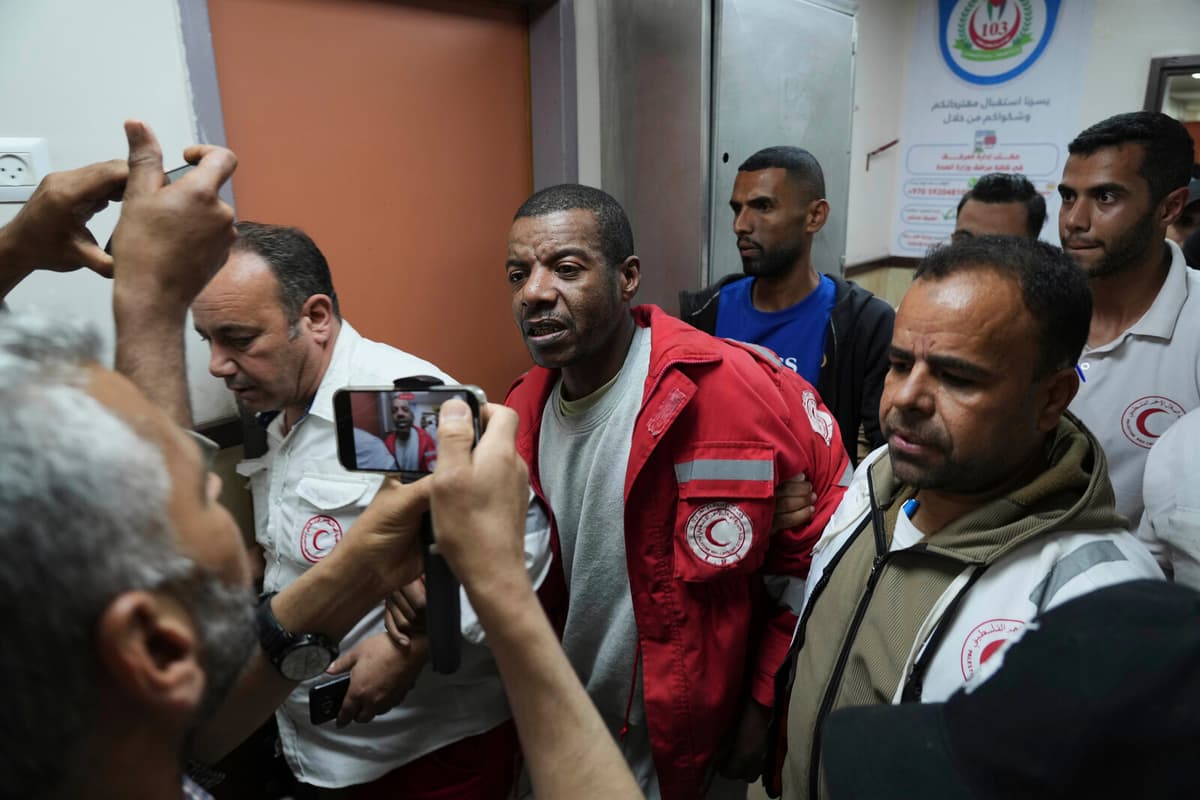The attack in March sparked outrage. In a video, published by, among others, The New York Times, clearly marked ambulances are seen driving through the dawn in Gaza with blue lights on. When rescue personnel leave the vehicles to help a car in a ditch, bird chirps are replaced by gunfire.
15 healthcare workers were shot or beaten to death by Israeli forces. It wasn't until several days later that they were found in a mass grave near Rafah, still wearing their uniforms. Some had their hands tied behind their backs, according to eyewitnesses.
Only two people survived the attack, one of them being ambulance driver Asaad al-Nasasrah, who is now testifying about the attack for the Palestinian Red Crescent (PRCS).
Buried himself
The 47-year-old describes how he sought shelter on the ground, behind the ambulance, when he heard the shots against his colleagues. According to al-Nasasrah, some of them survived the initial attack – only to be shot dead shortly after while begging for their lives.
Al-Nasasrah told that the soldiers approached closer and closer, and then he heard them shoot all those who were still alive, says PRCS spokesperson Nebal Farsakh to The Guardian.
He tried to hide and protect himself as much as he could, buried himself in the ground. Mohammed al-Heila, another killed healthcare worker, lay on top of him.
According to al-Nasasrah's testimony, given to PRCS in the presence of a coordinator for international humanitarian law, al-Heila hugged him before taking his last breath. When the Israeli soldiers realized that al-Nasasrah was still alive, they pointed a weapon at him, but let him live after he desperately cried out that his mother is an Israeli citizen.
Isolated in the "discorum"
Instead, he was stripped and thrown into a ditch, he tells PRCS. Then he was taken away. He was held in Israeli custody for 37 days, during which he says he was tortured, bound, and subjected to psychological torture and starvation.
He was also isolated for three days in a room with very loud music, which the Israelis called the "discorum". He described it as going crazy, that the music was so loud that it felt like his nose and ears were bleeding, says spokesperson Nebal Farsakh.
For two weeks, no one knew where he was. Asaad al-Nasasrah was released after international pressure on April 29. He is still haunted by the sound of gunfire and the brutal murders of his colleagues, he says to PRCS.
In a comment to The Guardian, the Israeli military claims that he was detained based on intelligence indicating "involvement in terrorist activities". Regarding the attack on the ambulance convoy, Israel has several times changed its statement", but eventually admitted to "operational mistakes".





